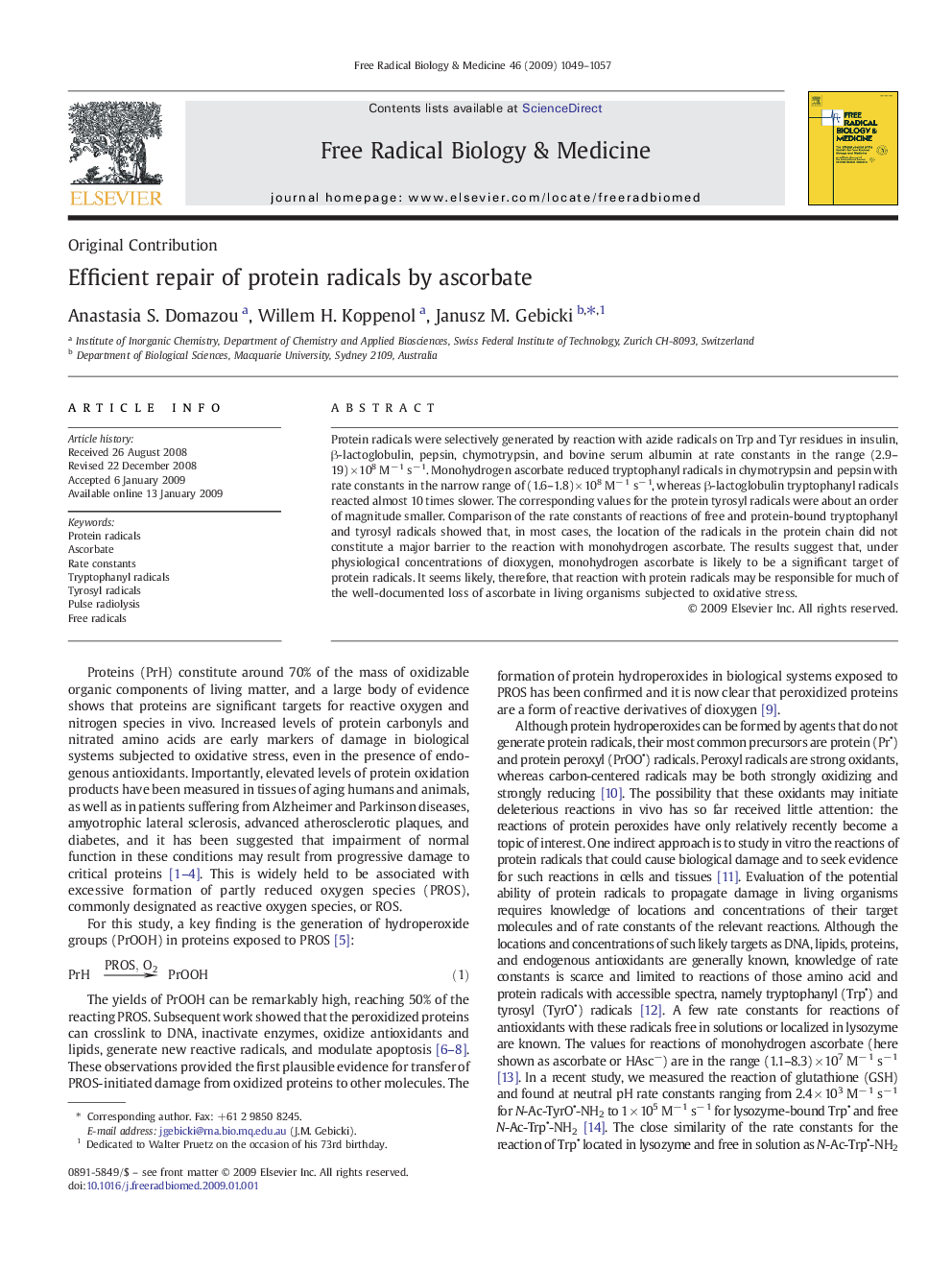| Article ID | Journal | Published Year | Pages | File Type |
|---|---|---|---|---|
| 10738725 | Free Radical Biology and Medicine | 2009 | 9 Pages |
Abstract
Protein radicals were selectively generated by reaction with azide radicals on Trp and Tyr residues in insulin, β-lactoglobulin, pepsin, chymotrypsin, and bovine serum albumin at rate constants in the range (2.9-19) Ã 108 Mâ 1 sâ 1. Monohydrogen ascorbate reduced tryptophanyl radicals in chymotrypsin and pepsin with rate constants in the narrow range of (1.6-1.8) Ã 108 Mâ 1 sâ 1, whereas β-lactoglobulin tryptophanyl radicals reacted almost 10 times slower. The corresponding values for the protein tyrosyl radicals were about an order of magnitude smaller. Comparison of the rate constants of reactions of free and protein-bound tryptophanyl and tyrosyl radicals showed that, in most cases, the location of the radicals in the protein chain did not constitute a major barrier to the reaction with monohydrogen ascorbate. The results suggest that, under physiological concentrations of dioxygen, monohydrogen ascorbate is likely to be a significant target of protein radicals. It seems likely, therefore, that reaction with protein radicals may be responsible for much of the well-documented loss of ascorbate in living organisms subjected to oxidative stress.
Related Topics
Life Sciences
Biochemistry, Genetics and Molecular Biology
Ageing
Authors
Anastasia S. Domazou, Willem H. Koppenol, Janusz M. Gebicki,
